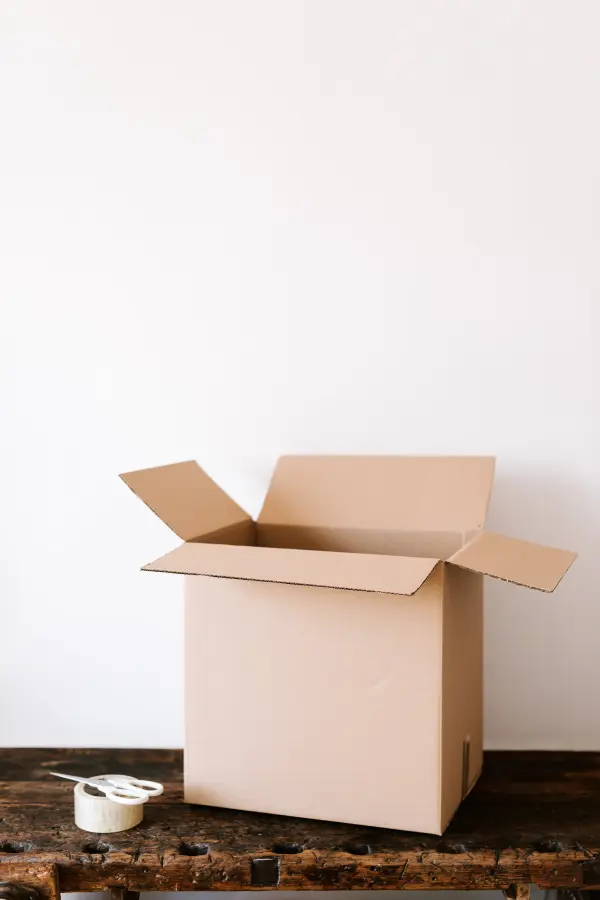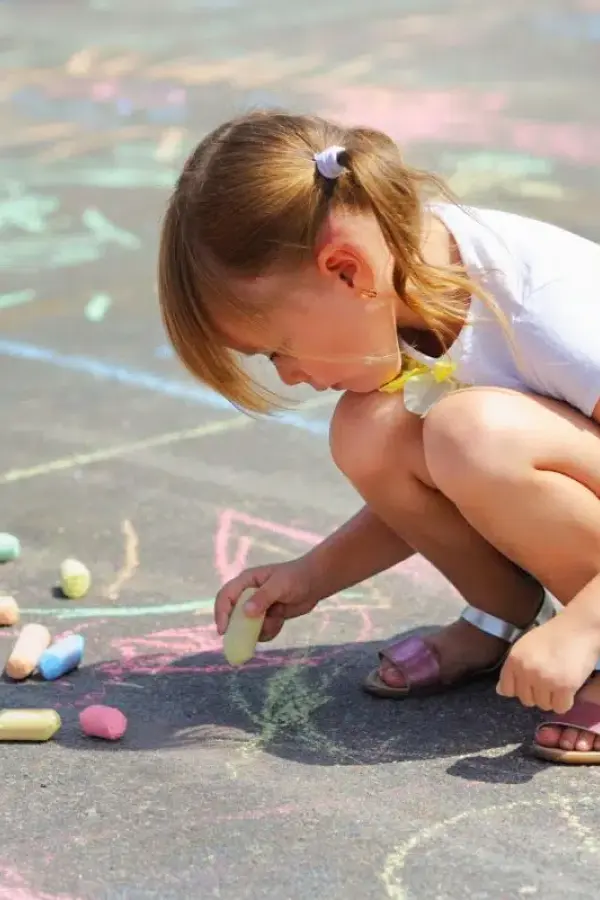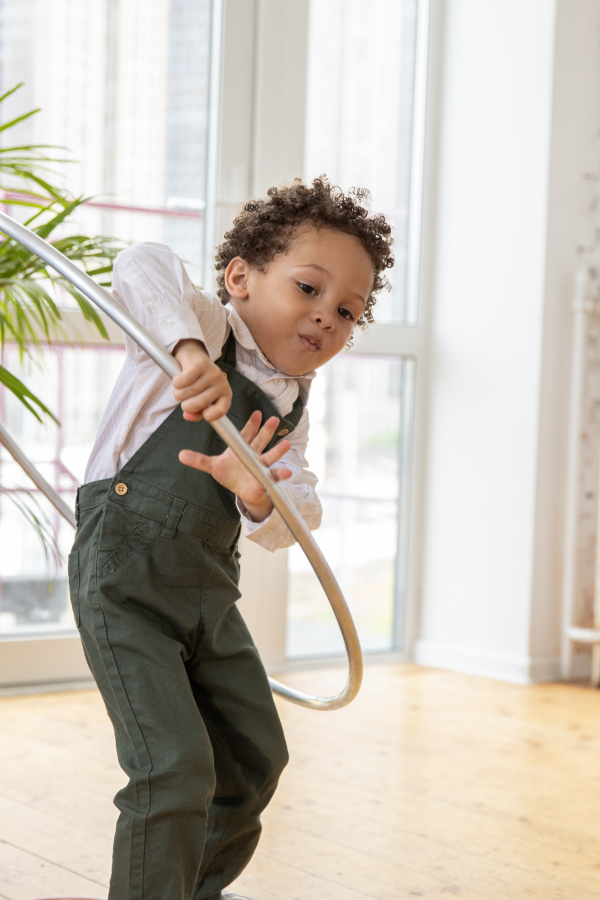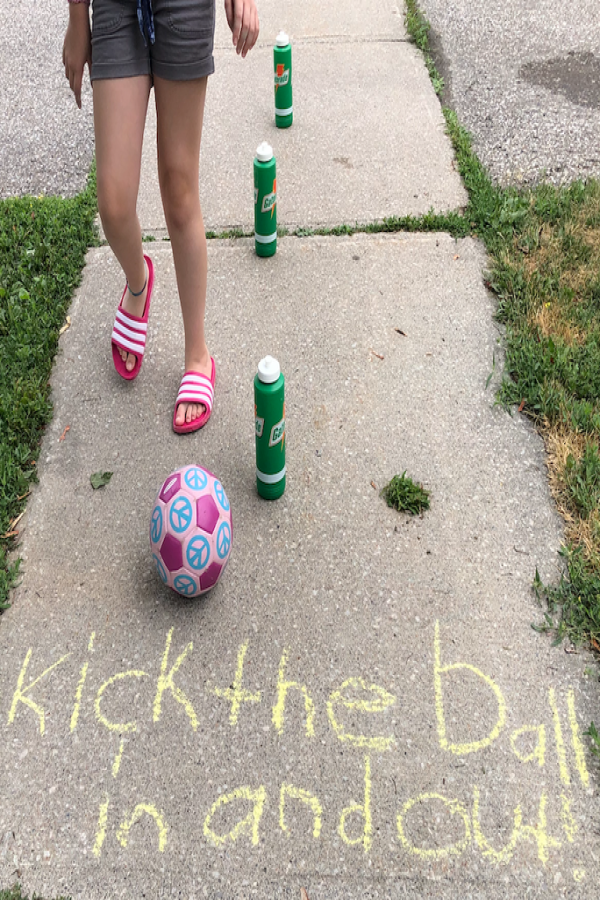settings
children
With Famly since
Obstacle courses in the Early Years can be extremely fun and challenging ways for children to stay active, but the benefits aren’t just physical. Whether it's indoor or outdoor, large or small, the benefits of obstacle courses touch on nearly every key area of child development.
Besides being a physical activity, here are a few other ways children benefit from obstacle courses:
- Building gross motor skills as they maneuver through the course
- Boosting balance skills and coordination skills
- Developing body awareness through new body movements
- Develop spatial awareness
- Learning to communicate, plan and work together
- Strengthening problem solving skills
- Growing sensory processing skills
And of course, we can't forget all the fun and creativity that comes from setting up your own obstacle course with children. When it comes to types of course, the possibilities are nearly infinite. But to get the ball rolling, here are ten ideas for obstacle courses that are fun, engaging, and simple to set up in your own early education classroom.
Obstacle course ideas for the children
1. Cardboard box challenge course

Why this obstacle course is worthwhile: A great way to work on those fine motor skills, and reuse some accumulated recycling, is to make an obstacle course out of cardboard boxes you've already got on hand. Beyond the cutting, taping and building, the children also will get practice developing cooperative play and language skills as they construct the course each agility obstacle together.
What you’ll need:
- Cardboard boxes
- Scissors
- Tape
How you do it: Have the children cut up and tape together the cardboard to create their own obstacles, such as tunnels to crawl through or shorter boxes lined up to jump in and out of. If you're working with children of a very early age, you may want to do the cutting yourself, or use safety scissors. This activity is easily adaptable and can be great for children of any age. The older the children, the more elaborate they can make the obstacle course.
2. Ninja navigation through yarn obstacle course

Why this obstacle course is worthwhile: Ever see a Hollywood spy nimbly squeeze through a room filled with laser alarm sensors? This indoor obstacle course takes that concept, but with yarn instead of high-tech lasers. It's great for early learners and helps improve balance and gross motor skill development.
What you’ll need:
- Yarn
- Tape
How you do it: Tie yarn to objects in close proximity at varying angles to create a “laser” obstacle where the children have to step over and bend under the yarn to avoid “tripping” the alarm. You can even attach little bells or noise makers to add another level to the challenge. Then tape yarn to the floor in a straight line, zig zag, or in circles for a “tightrope” obstacle where the children can only step on the yarn. You can make this an indoor obstacle course in your classroom, or string the yarn around trees, or playground equipment for an outdoor obstacle course.
3. Develop sensory processing skills by navigating colors and shapes

Why this obstacle course is worthwhile: This concept helps children develop their knowledge of colors and shapes, by combining those patterns with muscle memory and physical manoeuvring. These key concepts help later on with learning math and geometric concepts like size, space, positions, and angles. With the different combinations, you are also teaching the children to sort and categorize, which are essential for developing problem solving.
What you’ll need:
- Construction paper (at least 3 different colors)
- Scissors
- Tape
How you do it: Have your children cut out circles, triangles, and squares out of the paper, large enough to stand on, with each color. Tape the shapes to the ground in a path or just around the room and then set some rules for the obstacle course. For example, you can have the children only step on circles, or only step on yellow shapes, or only step on yellow circles for a harder course. Keep changing the rules for every run through to give the children an endless amount of ways to experience the obstacle course. For older groups of early learners, you can increase the amount of colors and shapes for a more challenging course as well.
4. Make a splash with this outdoor water play obstacle course

Why this obstacle course is worthwhile: If you have access to an outdoor space, water play can be incredibly beneficial for early learners. It helps to develop motor skills and sensory exploration, increase hand-eye coordination and introduces children to mathematical and scientific concepts like volume and weight. Additionally, it's just super fun and refreshing on a hot summer day.
What you’ll need:
- Kiddie pools or large containers
- Floating toys (rubber ducks work great)
- Buckets
- Sponges
- Balloons
- Toy baseball bat or stick
- Access to water
How you do it: Fill your kiddie pools or large containers with water and an assortment of floating toys and mark some of them with a sticker or permanent marker. Have children hop in and try to find a toy with a marking for one obstacle. Another one can be a water transfer challenge where you have several buckets, some with water and some empty, and you give the children big sponges and have them transfer all the water from one bucket to another by absorbing water with the sponge and wringing it out. For a guaranteed crowd pleaser, try water balloon piñatas. Fill water balloons and tie them to a clothesline and then give the children plastic toy bats or sticks to burst a balloon and complete the challenge.
5. Outdoor obstacle course with sidewalk chalk

Why this obstacle course is worthwhile: Sidewalk chalk is a staple in childhood development for building fine motor skills and mark-making for early learners, and it provides opportunities for children to work on writing words and numbers. With this idea, you'll combine that creative play with all the physical benefits of obstacle courses.
What you’ll need:
- Chalk
- Suitable outdoor space with pavement
How you do it: For a super quick and easy outdoor obstacle course, get some sidewalk chalk and simply draw your own. Make a hopscotch path. Create a maze. Draw a series of shapes with arrows telling the children where to go. Depending on the age of the group, you can also utilize numbers and simple words that show the children what to do to complete the course. After one or two examples let the children get creative and have them draw their own.
6. Hot lava obstacle course

Why this obstacle course is worthwhile: This obstacle course promotes spatial awareness and balance as the children hop from object to object, and climb and crawl across different surfaces. This course can also be exciting for early learners to “break the rules," experiment with controlled risk, and be permitted to stand on furniture or get on top of tables in a supervised environment.
What you’ll need:
- Small mats
- Cushions
- Access to furniture
How you do it: Using small mats or old cushions, create a path that leads children around the room to various pieces of furniture, such as couches, chairs, or sturdy tables, and pretend the floor is lava. Make sure to do a proper risk assessment first, to make sure this activity provides a safe and developmentally appropriate level of challenge for children.
The big ideas

7. Create a classroom scavenger hunt

Why this obstacle course is worthwhile: Some indoor obstacle courses don't require construction, so much as creatively rethinking your environment. This activity supports children’s problem-solving, logic and critical thinking and can be adapted to any age group depending on the difficulty of the questions.
What you’ll need:
- Paper
- Writing utensil
How you do it: For more of a mental obstacle course, set up a scavenger hunt by hiding clues around the classroom and write simple riddles or problems that the children have to solve in order to find the next clue. You can even put the children into small groups so they can discuss and answer the questions together.
8. Sensory preschool obstacle course

Why this obstacle course is worthwhile: Young children use their fives sensory inputs to explore and make sense of the world around them. It’s an incredibly important part of early development, so setting up an obstacle course that engages sensory play can be not only fun, but can also offer a positive and lasting impact to brain development.
What you’ll need:
- Candles (scented and unscented that are same color)
- Large bins
- Dried rice
- Wood blocks and ball (plastic or other materials would work too)
- Blind fold
- Bell
- Paper to color on
- Markers or crayons
- Different textured materials ex: sandpaper, cotton, laminate, wood, etc.
How you do it: For this one, you want different 'sensory stations' to serve as checkpoints in this one. Cut the unscented candles and scented candles that are the same color into pieces. Set them out on a table and have the children identify the scented piece of wax in order to move on. Fill the large bin or container with dried rice and bury the blocks and ball within. Blind fold the children and have them dig around with their hands searching for the ball. Set out a variety of materials and make the children sort them into different categorical boxes such as rough, smooth, soft and hard. For another obstacle, get a bell and print out copies of a page from a coloring book, and have the children start to color when they hear you ring the bell, but then stop when you ring it again. Continue to do so at varying intervals until they finish coloring in order to complete the challenge.
9. Outdoor activity challenge course

Why this obstacle course is worthwhile: Active play helps develop gross motor skills and, with the communal challenges, encourages team work and communication skills. The wide open space of an outdoor obstacle course build's children's complex coordination, and makes it easy to be more active.
What you’ll need:
- Jump ropes
- Hula hoops
- Bean bags
- Buckets
How to do it: This obstacle course is part relay race, too. Lay out the activities in a row and have the children jump rope a certain amount of times, then, having other classmates hold up several hula hoops, have them step through the hoops. Set out the bucket and have the children throw the bean bags into them, like a game of cornhole. Finally, have them crawl back to the beginning in order to complete the course. For an extra challenge try timing the children and see if they can do the course faster a second time.
10. Design your own obstacle course

Why this obstacle course is worthwhile: This freeform approach bolsters creativity and engages the children in group work and problem solving, all the while giving them opportunities to flex a slew of skills and knowledge they’ve acquired from pervious obstacle courses.
What you’ll need: This can differ greatly depending on what direction you take the obstacle course in, but some ideas are:
- Various arts and crafts materials
- Recycled materials
- Scissors
- Yarn
- Cushions
How to do it: Probably best for slightly older children, but after doing several different kinds of obstacle courses with your early learners, try and have the children design their own course. Have the children brainstorm ideas by asking them some questions such as
- What makes an obstacle course?
- What are things from previous courses that they liked? That they didn’t like?
- What’s something that is fun, but challenging to do?
And then establish a space where the course will start and stop and let the children build and organize based on their brainstorming.
Please note: here at Famly we love sharing creative activities for you to try with the children at your setting, but you know them best. Take the time to consider adaptions you might need to make so these activities are accessible and developmentally appropriate for the children you work with. Just as you ordinarily would, conduct risk assessments for your children and your setting before undertaking new activities, and ensure you and your staff are following your own health and safety guidelines.
Get 1000s of free EY activities
Want over 7,000 activities? See them in a free 14-day trial. Filter to target learning areas, age groups and topics, and get inspired.
Get started









